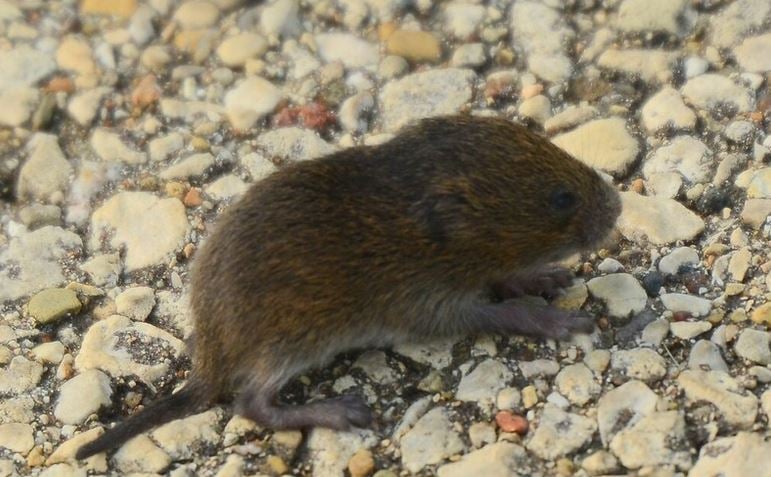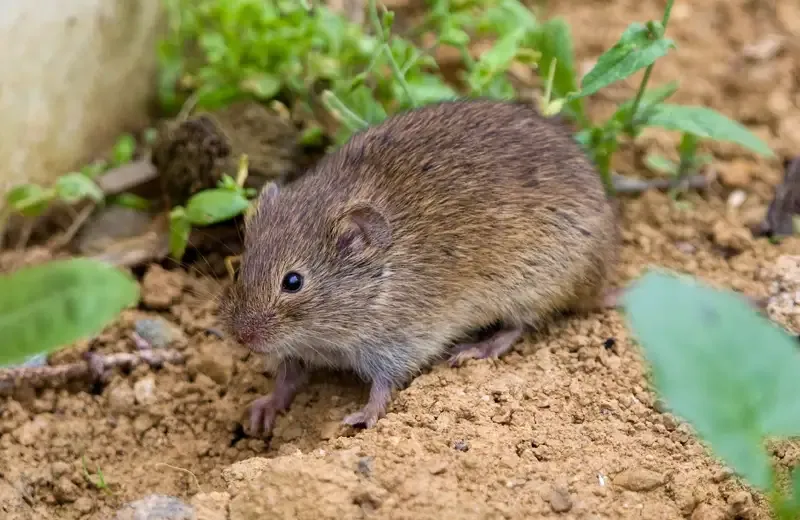Vole Control Tips to Preserve Your Yard and Gardens
Vole Control Tips to Preserve Your Yard and Gardens
Blog Article
Vole Parasite Control Demystified: A Full Introduction of Invasion Discovery and Efficient Therapy Methods
From subtle indications of invasion to the implementation of targeted control steps, browsing the world of vole insect control demands a mix of expertise and strategic action. In this thorough review, we will explore the subtleties of vole problem detection and delve into the realm of reliable treatment methods that can protect your spaces from these underground problems.
Understanding Vole Behavior Patterns
Comprehending the complex behavior patterns of voles is necessary for effectively applying parasite control procedures in agricultural and residential settings. Voles, tiny rats that look like mice yet with stouter bodies, are infamous for their quick recreation rates and voracious cravings for plant life. By diving into their behavior patterns, parasite control specialists can acquire valuable understandings into vole behaviors, preferences, and susceptabilities.
Voles are largely herbivores, eating a large range of plants, roots, bulbs, and light bulbs. They are additionally prolific tunnelers, developing sophisticated underground burrow systems for nesting and foraging. By comprehending these habits, parasite control experts can purposefully put catches and bait terminals along vole runways and access points, boosting the likelihood of effective removal.
Moreover, understanding of vole actions patterns can assist in creating preventive measures to discourage future invasions. By attending to aspects that attract voles, such as thick plant life cover and easily accessible food sources, property owners can make their premises less welcoming to these devastating pests - vole lawn damage. To conclude, an extensive understanding of vole habits is vital in designing effective and lasting bug control methods
Identifying Indications of Vole Invasion
Efficient vole insect control begins with quickly acknowledging the dead giveaways of vole problem on residential or commercial properties. One of one of the most usual signs of vole existence is the presence of surface area paths. These paths are narrow pathways through turf or greenery that voles produce as they travel in between their burrows and food resources. In addition, vole droppings are an additional clear indication of infestation. Vole droppings are tiny, cylindrical pellets that are usually discovered along their runways or near their burrows.
In enhancement to runways and droppings, nibble marks on tree bark and plants are additionally signs of vole activity. Voles have a behavior of gnawing on the bases of bushes and trees, which can trigger damage and potentially eliminate the plants. Additionally, the visibility of burrow openings in the ground suggests an energetic vole populace. Vole burrow entries are normally small and found in grassy or mulched areas.
Being watchful for these indications can help homeowner discover vole problems early and take ideal pest control steps to avoid additional damage.
Implementing Targeted Control Steps
What particular techniques can be used to effectively apply targeted control procedures for vole parasite monitoring on buildings? Implementing targeted control steps for vole pest administration requires a knockout post a multi-faceted strategy that incorporates both prevention and obliteration techniques.
Capturing is another effective technique for managing vole populations. Live catches can be tactically put along vole runways or delve entrances, baited with peanut butter or apple pieces. When recorded, voles ought to be humanely eliminated to a different area to stop reinfestation.
Rodenticides can be used as a last option for serious invasions, yet care needs to be worked out to avoid damage to non-target animals. When using rodenticides for vole control - vole yard damage., it is important to adhere to all security guidelines and policies.
Environment-friendly and natural Solutions
The fostering of ecologically mindful methods can play an essential duty in handling vole populations without causing injury to the ecosystem. Green and all-natural solutions use a lasting technique to vole parasite control, decreasing the usage of unsafe chemicals and advertising biodiversity in the affected areas.
One effective natural method is using predator urine or predator decoys. Killers like foxes, owls, and snakes are the vole's all-natural adversaries. By tactically placing killer pee or decoys around the plagued areas, voles might be prevented from settling in those places.
Furthermore, growing vole-resistant vegetation can aid in minimizing vole damages. Plants such as daffodils, crown imperials, and Siberian squill are understood to be unappealing to voles and can act as all-natural repellents.
Moreover, developing physical obstacles like cord mesh or gravel around at risk plants can prevent voles from accessing them. These barriers can assist secure yards and landscapes without posturing any type of hazard to the environment or other non-target types. By including these environmentally friendly and all-natural solutions, vole infestations can be handled properly while preserving ecological equilibrium.
Long-Term Avoidance Approaches
To sustainably attend to vole invasions over time, carrying out positive actions is critical for lasting avoidance methods. By minimizing thick plants, mulch, and clutter around buildings, you can make your home less appealing to voles.
Regular tracking of vole activity is important for very early detection of any indicators of invasion. Establishing up vole traps can help in controlling their population before it ends up being a full-blown infestation. It is also important to secure off any kind of entry points to structures or frameworks to avoid voles from accessing.

Final Thought
In verdict, recognizing vole behavior check that patterns, identifying signs of infestation, applying targeted control actions, making use of environmentally friendly useful link and natural remedies, and implementing long-term prevention strategies are important action in properly handling vole invasions. By being aggressive and taking the needed actions to address vole concerns immediately, individuals can effectively stop and regulate vole invasions in their residential properties.

Report this page